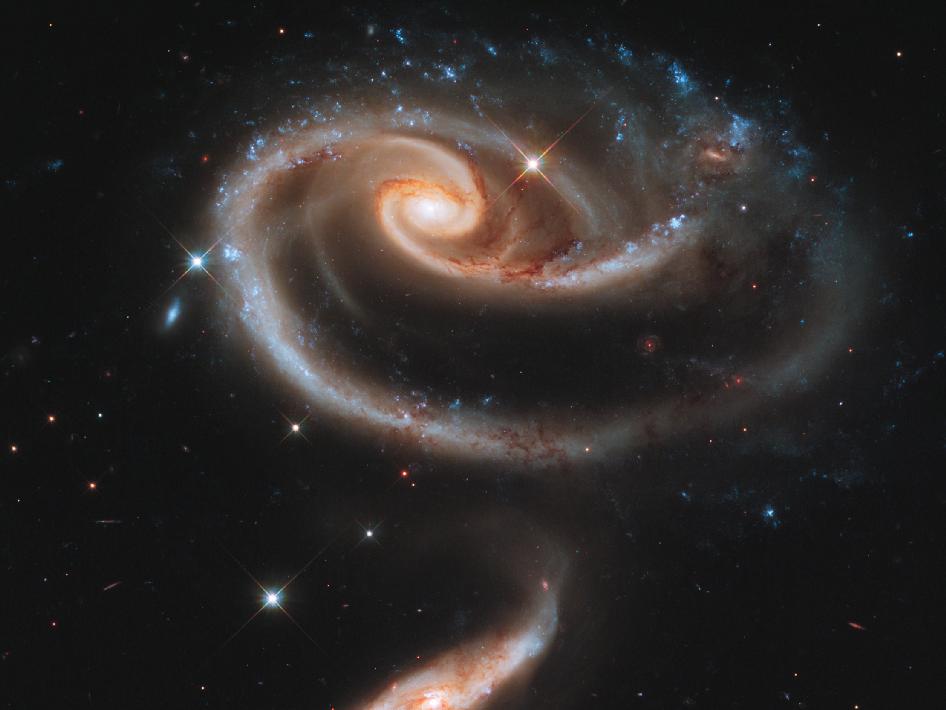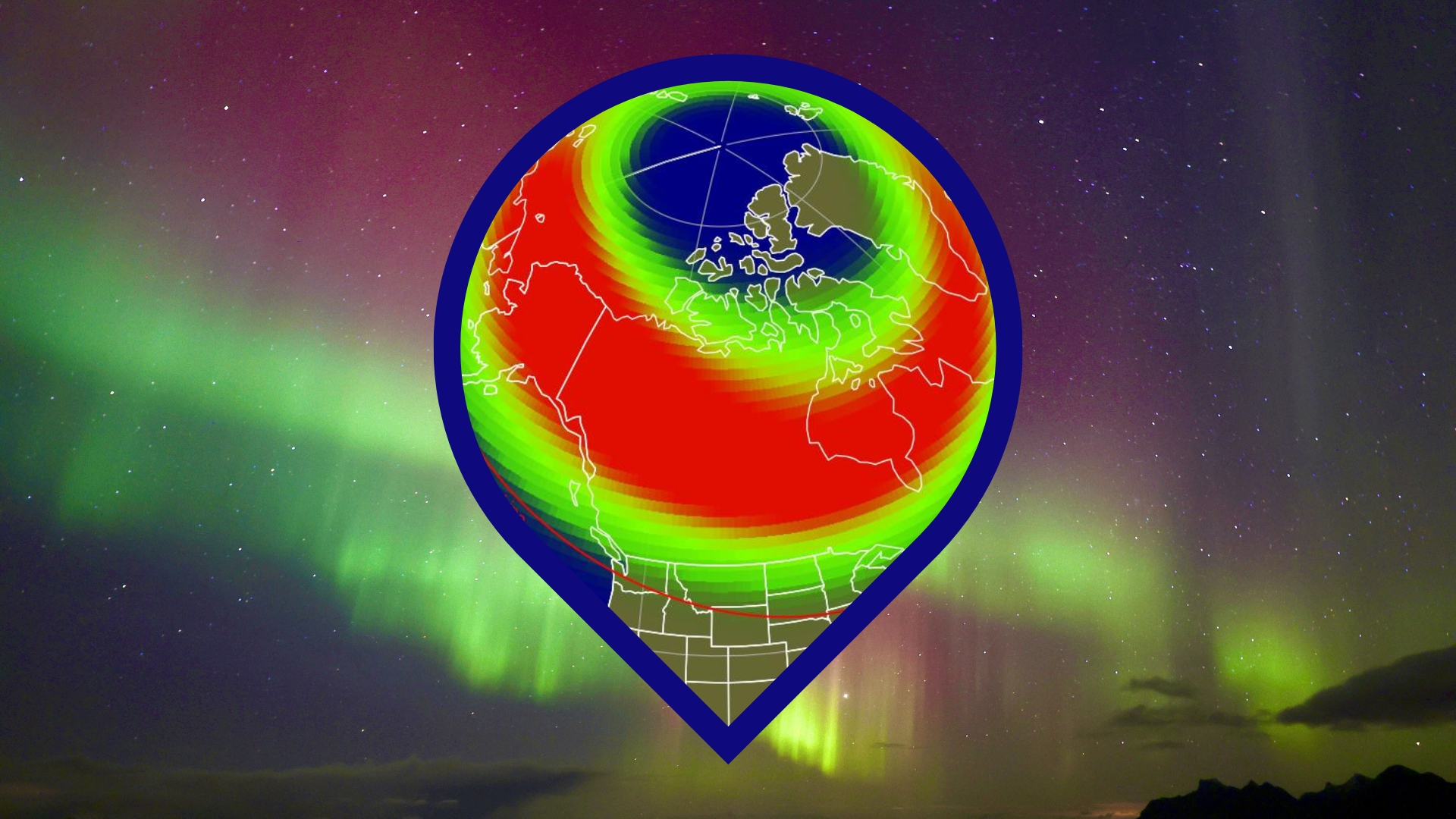When Galaxies Meet: Hubble Telescope Snaps Photo for 21st Birthday

A whirlpool-like spiral galaxy is being distorted by the gravitational pull of a neighbor in a new photo from NASA's Hubble Space Telescope.
The photo was released Wednesday (April 20) to mark the orbiting observatory's upcoming 21st birthday. Hubble was launched into space April 24, 1990 aboard the space shuttle Discovery. [See Hubble's new galaxy photo]
"For 21 years, Hubble has profoundly changed our view of the universe, allowing us to see deep into the past while opening our eyes to the majesty and wonders around us," NASA Administrator Charles Bolden said in a statement."I was privileged to pilot space shuttle Discovery as it deployed Hubble. After all this time, new Hubble images still inspire awe and are a testament to the extraordinary work of the many people behind the world's most famous observatory."
The new Hubble picture shows a pair of interacting galaxies called Arp 273. The large spiral galaxy at the top is known as UGC 1810. It is being pulled apart by the tidal gravitational forces (similar to the tug of the moon on Earth) from its companion, the smaller galaxy UGC 1813.
The glittering blue points at the top of the image are clusters of bright, hot, young stars that shine fiercely in blue and ultraviolet light. The warped spiral arms of the larger galaxy have been knocked out of their normal plane by the gravity of the smaller one, which is thought to have plunged through its behemoth companion in the past, researchers said. [Spectacular Photos From The Hubble Telescope]
This picture was taken in December 2010 through three separate filters by Hubble's Wide Field Camera 3 (WFC3). The filters cover various wavelengths over the ultraviolet, blueand red portions of the electromagnetic spectrum.
"Hubble is America's gift to the world," Sen. Barbara Mikulski, D-Md., said in a statement. "Its jaw-dropping images have rewritten the textbooks and inspired generations of schoolchildren to study math and science. It has been documenting the history of our universe for 21 years. Thanks to the daring of our brave astronauts, a successful servicing mission in 2009 gave Hubble new life. I look forward to Hubble's amazing images and inspiring discoveries for years to come." [Truth Behind the Photos: What Hubble Really Sees]
Breaking space news, the latest updates on rocket launches, skywatching events and more!
Arp 273 lies in the constellation Andromeda, roughly 300 million light-years away from Earth. The two interacting galaxies are separated from each other by tens of thousands of light-years.
You can follow SPACE.com senior writer Clara Moskowitz on Twitter @ClaraMoskowitz. Follow SPACE.com for the latest in space science and exploration news on Twitter @Spacedotcom and on Facebook.
Join our Space Forums to keep talking space on the latest missions, night sky and more! And if you have a news tip, correction or comment, let us know at: community@space.com.

Clara Moskowitz is a science and space writer who joined the Space.com team in 2008 and served as Assistant Managing Editor from 2011 to 2013. Clara has a bachelor's degree in astronomy and physics from Wesleyan University, and a graduate certificate in science writing from the University of California, Santa Cruz. She covers everything from astronomy to human spaceflight and once aced a NASTAR suborbital spaceflight training program for space missions. Clara is currently Associate Editor of Scientific American. To see her latest project is, follow Clara on Twitter.
